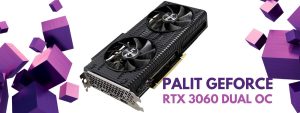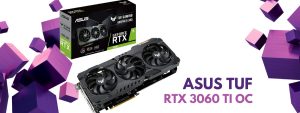If you are looking for a graphics card for Stable Diffusion on your local PC, you should look really at the NVIDIA RTX range, which at the time of writing (December 2022) are the only GPUs that are natively supported by Stable Diffusion.
NB: Some users have reported success running the software on M1 and M2 Macs, AMD cards, and older NVIDIA cards, but these tend to be more prone to problems and are more difficult to set up.
How to choose a graphics card for Stable Diffusion
To ensure the best performance, it’s recommended to get one of the newer Nvidia RTX cards with at least 8GB of memory. We highly recommend the RTX 3060 and RTX 3080 range as some of the best cards for best results.
These will be able to handle the workload more efficiently and produce high-quality images more quickly. You should note that for each graphics card range, there are a number of different manufacturers who make slightly different cards for each chipset, and whilst all of them will work fine for Stable Diffusion, some people may have a preference for one manufacturer over another.
RTX 3060 Range
The RTX 3060 is a budget-friendly range that offers good performance. There are two main versions, the standard RTX 3060 with 12GB VRAM, and the RTX 3060 Ti model with 8GB VRAM.
If you are in the market for a graphics card specifically for use in Stable Diffusion, the RTX 3060 may be the better choice for you as it has 12 Gb of VRAM, but the Ti model is actually the faster model of the two.
Ultimately, the decision between the RTX 3060 and 3060 Ti will depend on your specific needs and priorities. If you prioritize VRAM for Stable Diffusion and are willing to sacrifice some speed, the RTX 3060 may be the right choice for you. If, on the other hand, you prioritize high frame rates and smooth gameplay, the 3060 Ti may be a better fit.
ASUS TUF Gaming NVIDIA GeForce RTX 3060
PCIe 4.0, 12 GB GDDR6, HDMI 2.1, DisplayPort 1.4a, Dual ball Fan Bearings, Military-grade Certification, GPU Tweak II
MSI GeForce RTX 3060 GAMING X 12G
12GB GDDR6, 1837MHz, 192-bit, 3x Display Ports, HDMI 2.1 (Supports 4K)
Palit GeForce RTX 3060 Ti
Dual 8G GDDR6 Ray-Tracing, 4864 Core, 1410 MHz, 1665 MHz Boost, 3 x DisplayPort, HDMI
RTX 3080 Range
The Nvidia GeForce RTX 3080 graphics card is a great option for users running Stable Diffusion on their computer. It is powered by Ampere, NVIDIA’s 2nd gen RTX architecture, which delivers impressive performance and power efficiency. The RTX 3080 is equipped with dedicated 2nd gen RT Cores and 3rd gen Tensor Cores, streaming multiprocessors, and G6X memory, making it well-suited for a wide range of tasks.
In short, the Nvidia GeForce RTX 3080 is a powerful and efficient graphics card that is well-suited for use in Stable Diffusion.
Palit GeForce RTX 3080 GameRock
10GB, 1440 MHz, 1755 MHz Boost, GDDR6X, ARGB SYNC, Angel ARGB, 8704 Core, 3 x DisplayPort, HDMI, Dual BIOS, 0-dB Tech
Palit GeForce RTX 3080 Ti
12 GB, 1365 MHz GPU, 1665 MHz Boost, NVIDIA Ampere, HDMI, 3x DisplayPort, ARGB lighting, Advanced TurboFan 3.0
While the RTX 3050 may be able to run Stable Diffusion, it’s not a particularly good value compared to the similarly priced RTX 3060 12GB variant. If you’re building or upgrading a PC specifically for Stable Diffusion, it’s best to avoid older RTX 20-series GPUs, as they tend to be slower and may not provide the same level of performance.












